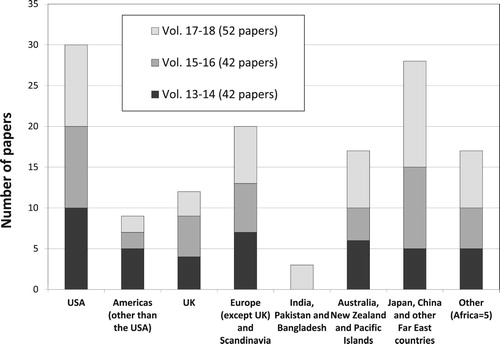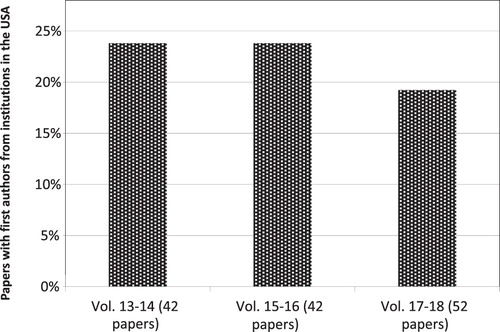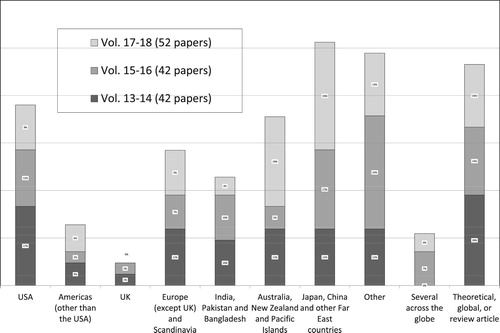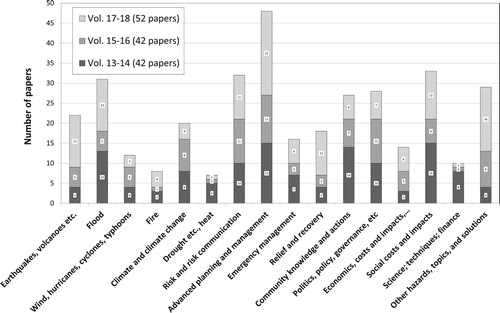This journal – Environmental Hazards: Human and Policy Dimensions – seeks to be an innovative, interdisciplinary and international research journal addressing the human and policy dimensions of hazards. Through this editorial, I wish to restate our aims and give some ideas for future editorial policies.
As is well known, the journal addresses the full range of hazardous events from extreme geological, hydrological, atmospheric and biological events, such as earthquakes, floods, storms and epidemics, to technological failures and malfunctions, such as industrial explosions, fires and toxic material releases. Environmental Hazards: Human and Policy Dimensions is the source of new ideas and elaborations in hazards and risk research.
With a genuinely international perspective, we highlight issues of human exposure, vulnerability, awareness, response and risk. The role of hazards in affecting development, and issues of efficiency, social justice and sustainability are also explored in papers published in the journal. Well-known conventional hazards receive extensive coverage but submissions about new forms of hazard, emerging risk management institutions and restructuring of ideas about hazards – including their role in human affairs – have been particularly welcome.
The aim here is to show the evolving character of this journal. The method used is similar to that in the previous analysis (Penning-Rowsell, Citation2013). We look at three characteristics of the papers published in Environmental Hazards, namely the country of institution of the first author of each paper, the location of any case studies undertaken, and an analysis of the many topics and themes developed in those 136 papers (volumes 13 (2014) to 18 (2019) inclusive). In the case of the topics and themes, there was some subjectivity in the categorisation we used, and in this exercise we have increased the number of classes from 12 in 2013 to 16 here, to show greater detail.
The result in shows 30 of the 136 papers (22%) coming from authors with their home institution in the U.S.A., down from 41% in the previous analysis. The major balancing factor is a significant increase in papers from Japan, China and other Far East countries, with a figure of 20% from this analysis (27 papers) compared with 4% previously. There remains an inadequate number of papers accepted from scholars in African countries (just five). shows that the U.S.A. contribution is approximately stable over the 2014–2019 period at one-fifth of all accepted papers.
The previous dominance of case studies from the U.S.A., U.K. and Europe (c. 41% in the 2013 analysis) has been balanced by a larger number of case studies from Japan, China and the Far East countries, as well as contributions from India, Pakistan and Bangladesh (). In the case of China, this is assisted by a Special Issue on earthquake hazards (Volume 17, Issue 4), guest edited by scholars from the University of Sichuan.
The subjects explored in the papers (336 topics and themes in the 136 papers) have also shown a significant diversification from the original analysis (). Climate change has emerged as a significant theme, but risk and risk communication, planning and emergency management, social costs and impacts, have become the important subjects explored by the recent Environmental Hazards authors. We can see in this a movement away from a simple concentration on hazard to a broader focus on risk, resilience and risk reduction governance, policy and measures.
Important to ideas, policies and practices regarding hazard reduction globally in this context has been the development of the Sustainable Development Goals (SDGs) by the United Nations (Citation2018). These set targets for specific goals and their objectives, and the relationship with hazards and hazard reduction is easily appreciated. Almost all 17 of the goals are relevant to research on Environmental Hazards, but some are perhaps more relevant than others ().
Table 1. The UN Sustainable Development Goals most pertinent to the research reported in Environmental Hazards.
What the journal seeks to do here is take an international perspective and link particular circumstances in a range of places to modern ideas, including in the SDGs, about hazard exposure, vulnerability reduction and the promotion of community resilience. The SDGs provide a challenging backdrop to that effort, and it is likely in future that more papers will be accepted that explicitly address the relationship between these goals and particular hazards in specific locations. This is not something that we require but will be useful as a way of monitoring the development of ideas and practices with respect to these Goals, and their evolution over time.
References
- Penning-Rowsell, E. C. (2013). The internationalisation of environmental hazards. Environmental Hazards, 12(3–4), 181–183. https://doi.org/10.1080/17477891.2013.858513
- United Nations. (2018). SDG indicators. Retrieved March 4, 2020, from http://unstats.un.org/sdgs/indicators/database/




